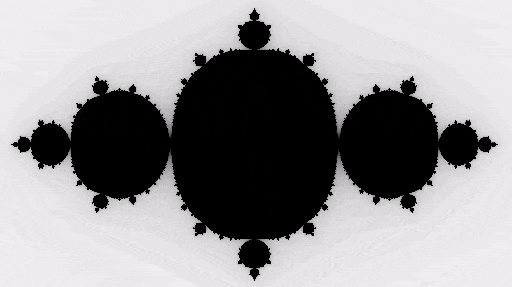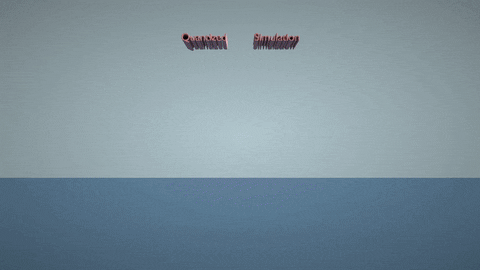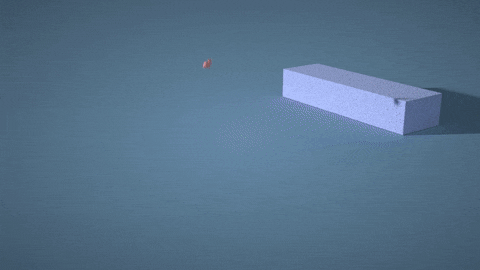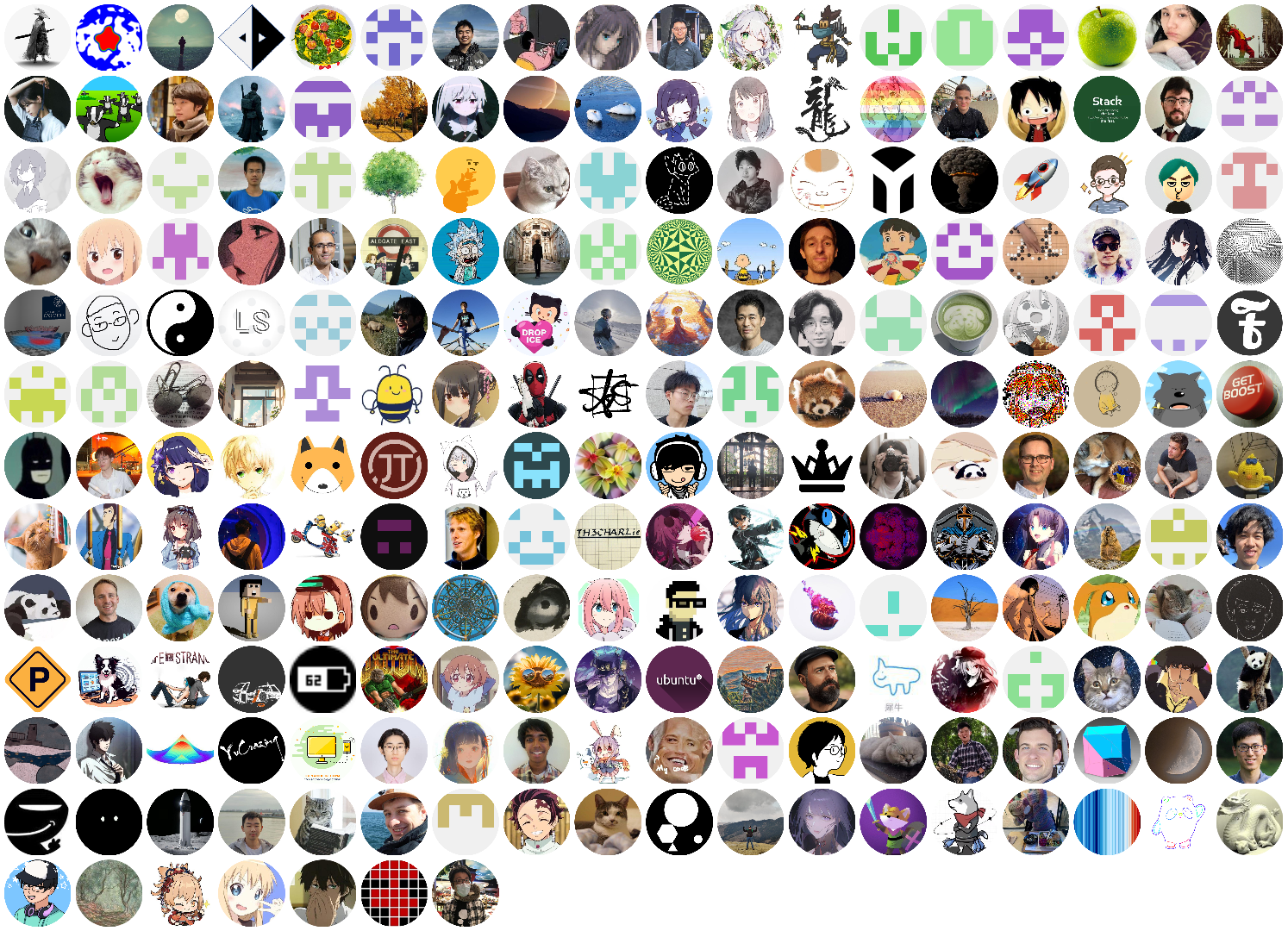# Taichi
**Repository Path**: mirrors/Taichi
## Basic Information
- **Project Name**: Taichi
- **Description**: Taichi 是一个计算机图形库,使用 C++ 编写而成,并且 Python 封装友好,提供了一个 Python 3 绑定
- **Primary Language**: Python
- **License**: Apache-2.0
- **Default Branch**: master
- **Homepage**: https://www.oschina.net/p/taichi
- **GVP Project**: No
## Statistics
- **Stars**: 133
- **Forks**: 38
- **Created**: 2019-05-16
- **Last Updated**: 2026-01-10
## Categories & Tags
**Categories**: scripting-language
**Tags**: None
## README
---
[](https://github.com/taichi-dev/taichi/releases/latest)
[](https://pepy.tech/project/taichi)
[](https://github.com/taichi-dev/taichi/actions/workflows/testing.yml)
[](https://github.com/taichi-dev/taichi/actions/workflows/release.yml)
 ```shell
pip install taichi # Install Taichi Lang
ti gallery # Launch demo gallery
```
## What is Taichi Lang?
Taichi Lang is an open-source, imperative, parallel programming language for high-performance numerical computation. It is embedded in Python and uses just-in-time (JIT) compiler frameworks, for example LLVM, to offload the compute-intensive Python code to the native GPU or CPU instructions.
```shell
pip install taichi # Install Taichi Lang
ti gallery # Launch demo gallery
```
## What is Taichi Lang?
Taichi Lang is an open-source, imperative, parallel programming language for high-performance numerical computation. It is embedded in Python and uses just-in-time (JIT) compiler frameworks, for example LLVM, to offload the compute-intensive Python code to the native GPU or CPU instructions.

 The language has broad applications spanning real-time physical simulation, numerical computation, augmented reality, artificial intelligence, vision and robotics, visual effects in films and games, general-purpose computing, and much more.
The language has broad applications spanning real-time physical simulation, numerical computation, augmented reality, artificial intelligence, vision and robotics, visual effects in films and games, general-purpose computing, and much more.





 [...More](#demos)
## Why Taichi Lang?
- Built around Python: Taichi Lang shares almost the same syntax with Python, allowing you to write algorithms with minimal language barrier. It is also well integrated into the Python ecosystem, including NumPy and PyTorch.
- Flexibility: Taichi Lang provides a set of generic data containers known as *SNode* (/ˈsnoʊd/), an effective mechanism for composing hierarchical, multi-dimensional fields. This can cover many use patterns in numerical simulation (e.g. [spatially sparse computing](https://docs.taichi-lang.org/docs/sparse)).
- Performance: With the `@ti.kernel` decorator, Taichi Lang's JIT compiler automatically compiles your Python functions into efficient GPU or CPU machine code for parallel execution.
- Portability: Write your code once and run it everywhere. Currently, Taichi Lang supports most mainstream GPU APIs, such as CUDA and Vulkan.
- ... and many more features! A cross-platform, Vulkan-based 3D visualizer, [differentiable programming](https://docs.taichi-lang.org/docs/differentiable_programming), [quantized computation](https://github.com/taichi-dev/quantaichi) (experimental), etc.
## Getting Started
### Installation
[...More](#demos)
## Why Taichi Lang?
- Built around Python: Taichi Lang shares almost the same syntax with Python, allowing you to write algorithms with minimal language barrier. It is also well integrated into the Python ecosystem, including NumPy and PyTorch.
- Flexibility: Taichi Lang provides a set of generic data containers known as *SNode* (/ˈsnoʊd/), an effective mechanism for composing hierarchical, multi-dimensional fields. This can cover many use patterns in numerical simulation (e.g. [spatially sparse computing](https://docs.taichi-lang.org/docs/sparse)).
- Performance: With the `@ti.kernel` decorator, Taichi Lang's JIT compiler automatically compiles your Python functions into efficient GPU or CPU machine code for parallel execution.
- Portability: Write your code once and run it everywhere. Currently, Taichi Lang supports most mainstream GPU APIs, such as CUDA and Vulkan.
- ... and many more features! A cross-platform, Vulkan-based 3D visualizer, [differentiable programming](https://docs.taichi-lang.org/docs/differentiable_programming), [quantized computation](https://github.com/taichi-dev/quantaichi) (experimental), etc.
## Getting Started
### Installation
Prerequisites
- Operating systems
- Windows
- Linux
- macOS
- Python: 3.6 ~ 3.10 (64-bit only)
- Compute backends
- x64/ARM CPUs
- CUDA
- Vulkan
- OpenGL (4.3+)
- Apple Metal
- WebAssembly (experiemental)
Use Python's package installer **pip** to install Taichi Lang:
```bash
pip install --upgrade taichi
```
*We also provide a nightly package. Note that nightly packages may crash because they are not fully tested. We cannot guarantee their validity, and you are at your own risk trying out our latest, untested features. The nightly packages can be installed from our self-hosted PyPI (Using self-hosted PyPI allows us to provide more frequent releases over a longer period of time)*
```bash
pip install -i https://pypi.taichi.graphics/simple/ taichi-nightly
```
### Run your "Hello, world!"
Here is how you can program a 2D fractal in Taichi:
```py
# python/taichi/examples/simulation/fractal.py
import taichi as ti
ti.init(arch=ti.gpu)
n = 320
pixels = ti.field(dtype=float, shape=(n * 2, n))
@ti.func
def complex_sqr(z):
return ti.Vector([z[0]**2 - z[1]**2, z[1] * z[0] * 2])
@ti.kernel
def paint(t: float):
for i, j in pixels: # Parallelized over all pixels
c = ti.Vector([-0.8, ti.cos(t) * 0.2])
z = ti.Vector([i / n - 1, j / n - 0.5]) * 2
iterations = 0
while z.norm() < 20 and iterations < 50:
z = complex_sqr(z) + c
iterations += 1
pixels[i, j] = 1 - iterations * 0.02
gui = ti.GUI("Julia Set", res=(n * 2, n))
for i in range(1000000):
paint(i * 0.03)
gui.set_image(pixels)
gui.show()
```
*If Taichi Lang is properly installed, you should get the animation below 🎉:*
 See [Get started](https://docs.taichi-lang.org) for more information.
### Build from source
If you wish to try our experimental features or build Taichi Lang for your own environments, see [Developer installation](https://docs.taichi-lang.org/docs/dev_install).
## Documentation
- [Technical documents](https://docs.taichi-lang.org/)
- [API Reference](https://docs.taichi-lang.org/api/)
- [Blog](https://docs.taichi-lang.org/blog)
## Community activity [](https://repography.com)
[](https://github.com/taichi-dev/taichi/commits)
[](https://github.com/taichi-dev/taichi/issues)
[](https://github.com/taichi-dev/taichi/pulls)
[](https://github.com/taichi-dev/taichi/commits)
## Contributing
Kudos to all of our amazing contributors! Taichi Lang thrives through open-source. In that spirit, we welcome all kinds of contributions from the community. If you would like to participate, check out the [Contribution Guidelines](CONTRIBUTING.md) first.
See [Get started](https://docs.taichi-lang.org) for more information.
### Build from source
If you wish to try our experimental features or build Taichi Lang for your own environments, see [Developer installation](https://docs.taichi-lang.org/docs/dev_install).
## Documentation
- [Technical documents](https://docs.taichi-lang.org/)
- [API Reference](https://docs.taichi-lang.org/api/)
- [Blog](https://docs.taichi-lang.org/blog)
## Community activity [](https://repography.com)
[](https://github.com/taichi-dev/taichi/commits)
[](https://github.com/taichi-dev/taichi/issues)
[](https://github.com/taichi-dev/taichi/pulls)
[](https://github.com/taichi-dev/taichi/commits)
## Contributing
Kudos to all of our amazing contributors! Taichi Lang thrives through open-source. In that spirit, we welcome all kinds of contributions from the community. If you would like to participate, check out the [Contribution Guidelines](CONTRIBUTING.md) first.
 *Contributor avatars are randomly shuffled.*
## License
Taichi Lang is distributed under the terms of Apache License (Version 2.0).
See [Apache License](https://github.com/taichi-dev/taichi/blob/master/LICENSE) for details.
## Community
For more information about the events or community, please refer to [this page](https://github.com/taichi-dev/community)
### Join our discussions
- [Discord](https://discord.gg/f25GRdXRfg)
- [GitHub Discussions](https://github.com/taichi-dev/taichi/discussions)
- [太极编程语言中文论坛](https://forum.taichi.graphics/)
### Report an issue
- If you spot an technical or documentation issue, file an issue at [GitHub Issues](https://github.com/taichi-dev/taichi/issues)
- If you spot any security issue, mail directly to security@taichi.graphics.
### Contact us
- [Discord](https://discord.gg/f25GRdXRfg)
- [WeChat](https://forum.taichi-lang.cn/t/topic/2884)
## Reference
### Demos
- [Nerf with Taichi](https://github.com/taichi-dev/taichi-nerfs)
- [Taichi Lang examples](https://github.com/taichi-dev/taichi/tree/master/python/taichi/examples)
- [Advanced Taichi Lang examples](https://github.com/taichi-dev/advanced_examples)
- [Awesome Taichi](https://github.com/taichi-dev/awesome-taichi)
- [DiffTaichi](https://github.com/taichi-dev/difftaichi)
- [Taichi elements](https://github.com/taichi-dev/taichi_elements)
- [Taichi Houdini](https://github.com/taichi-dev/taichi_houdini)
- [More...](misc/links.md)
### AOT deployment
- [Taichi AOT demos & tutorial](https://github.com/taichi-dev/taichi-aot-demo/)
### Lectures & talks
- SIGGRAPH 2020 course on Taichi basics: [YouTube](https://youtu.be/Y0-76n3aZFA), [Bilibili](https://www.bilibili.com/video/BV1kA411n7jk/), [slides (pdf)](https://yuanming.taichi.graphics/publication/2020-taichi-tutorial/taichi-tutorial.pdf).
- Chinagraph 2020 用太极编写物理引擎: [哔哩哔哩](https://www.bilibili.com/video/BV1gA411j7H5)
- GAMES 201 高级物理引擎实战指南 2020: [课件](https://github.com/taichi-dev/games201)
- 太极图形课第一季:[课件](https://github.com/taichiCourse01)
- [TaichiCon](https://github.com/taichi-dev/taichicon): Taichi Developer Conferences
- More to come...
### Citations
If you use Taichi Lang in your research, please cite the corresponding papers:
- [**(SIGGRAPH Asia 2019) Taichi: High-Performance Computation on Sparse Data Structures**](https://yuanming.taichi.graphics/publication/2019-taichi/taichi-lang.pdf) [[Video]](https://youtu.be/wKw8LMF3Djo) [[BibTex]](https://raw.githubusercontent.com/taichi-dev/taichi/master/misc/taichi_bibtex.txt) [[Code]](https://github.com/taichi-dev/taichi)
- [**(ICLR 2020) DiffTaichi: Differentiable Programming for Physical Simulation**](https://arxiv.org/abs/1910.00935) [[Video]](https://www.youtube.com/watch?v=Z1xvAZve9aE) [[BibTex]](https://raw.githubusercontent.com/taichi-dev/taichi/master/misc/difftaichi_bibtex.txt) [[Code]](https://github.com/yuanming-hu/difftaichi)
- [**(SIGGRAPH 2021) QuanTaichi: A Compiler for Quantized Simulations**](https://yuanming.taichi.graphics/publication/2021-quantaichi/quantaichi.pdf) [[Video]](https://www.youtube.com/watch?v=0jdrAQOxJlY) [[BibTex]](https://raw.githubusercontent.com/taichi-dev/taichi/master/misc/quantaichi_bibtex.txt) [[Code]](https://github.com/taichi-dev/quantaichi)
*Contributor avatars are randomly shuffled.*
## License
Taichi Lang is distributed under the terms of Apache License (Version 2.0).
See [Apache License](https://github.com/taichi-dev/taichi/blob/master/LICENSE) for details.
## Community
For more information about the events or community, please refer to [this page](https://github.com/taichi-dev/community)
### Join our discussions
- [Discord](https://discord.gg/f25GRdXRfg)
- [GitHub Discussions](https://github.com/taichi-dev/taichi/discussions)
- [太极编程语言中文论坛](https://forum.taichi.graphics/)
### Report an issue
- If you spot an technical or documentation issue, file an issue at [GitHub Issues](https://github.com/taichi-dev/taichi/issues)
- If you spot any security issue, mail directly to security@taichi.graphics.
### Contact us
- [Discord](https://discord.gg/f25GRdXRfg)
- [WeChat](https://forum.taichi-lang.cn/t/topic/2884)
## Reference
### Demos
- [Nerf with Taichi](https://github.com/taichi-dev/taichi-nerfs)
- [Taichi Lang examples](https://github.com/taichi-dev/taichi/tree/master/python/taichi/examples)
- [Advanced Taichi Lang examples](https://github.com/taichi-dev/advanced_examples)
- [Awesome Taichi](https://github.com/taichi-dev/awesome-taichi)
- [DiffTaichi](https://github.com/taichi-dev/difftaichi)
- [Taichi elements](https://github.com/taichi-dev/taichi_elements)
- [Taichi Houdini](https://github.com/taichi-dev/taichi_houdini)
- [More...](misc/links.md)
### AOT deployment
- [Taichi AOT demos & tutorial](https://github.com/taichi-dev/taichi-aot-demo/)
### Lectures & talks
- SIGGRAPH 2020 course on Taichi basics: [YouTube](https://youtu.be/Y0-76n3aZFA), [Bilibili](https://www.bilibili.com/video/BV1kA411n7jk/), [slides (pdf)](https://yuanming.taichi.graphics/publication/2020-taichi-tutorial/taichi-tutorial.pdf).
- Chinagraph 2020 用太极编写物理引擎: [哔哩哔哩](https://www.bilibili.com/video/BV1gA411j7H5)
- GAMES 201 高级物理引擎实战指南 2020: [课件](https://github.com/taichi-dev/games201)
- 太极图形课第一季:[课件](https://github.com/taichiCourse01)
- [TaichiCon](https://github.com/taichi-dev/taichicon): Taichi Developer Conferences
- More to come...
### Citations
If you use Taichi Lang in your research, please cite the corresponding papers:
- [**(SIGGRAPH Asia 2019) Taichi: High-Performance Computation on Sparse Data Structures**](https://yuanming.taichi.graphics/publication/2019-taichi/taichi-lang.pdf) [[Video]](https://youtu.be/wKw8LMF3Djo) [[BibTex]](https://raw.githubusercontent.com/taichi-dev/taichi/master/misc/taichi_bibtex.txt) [[Code]](https://github.com/taichi-dev/taichi)
- [**(ICLR 2020) DiffTaichi: Differentiable Programming for Physical Simulation**](https://arxiv.org/abs/1910.00935) [[Video]](https://www.youtube.com/watch?v=Z1xvAZve9aE) [[BibTex]](https://raw.githubusercontent.com/taichi-dev/taichi/master/misc/difftaichi_bibtex.txt) [[Code]](https://github.com/yuanming-hu/difftaichi)
- [**(SIGGRAPH 2021) QuanTaichi: A Compiler for Quantized Simulations**](https://yuanming.taichi.graphics/publication/2021-quantaichi/quantaichi.pdf) [[Video]](https://www.youtube.com/watch?v=0jdrAQOxJlY) [[BibTex]](https://raw.githubusercontent.com/taichi-dev/taichi/master/misc/quantaichi_bibtex.txt) [[Code]](https://github.com/taichi-dev/quantaichi)


 The language has broad applications spanning real-time physical simulation, numerical computation, augmented reality, artificial intelligence, vision and robotics, visual effects in films and games, general-purpose computing, and much more.
The language has broad applications spanning real-time physical simulation, numerical computation, augmented reality, artificial intelligence, vision and robotics, visual effects in films and games, general-purpose computing, and much more.





 [...More](#demos)
## Why Taichi Lang?
- Built around Python: Taichi Lang shares almost the same syntax with Python, allowing you to write algorithms with minimal language barrier. It is also well integrated into the Python ecosystem, including NumPy and PyTorch.
- Flexibility: Taichi Lang provides a set of generic data containers known as *SNode* (/ˈsnoʊd/), an effective mechanism for composing hierarchical, multi-dimensional fields. This can cover many use patterns in numerical simulation (e.g. [spatially sparse computing](https://docs.taichi-lang.org/docs/sparse)).
- Performance: With the `@ti.kernel` decorator, Taichi Lang's JIT compiler automatically compiles your Python functions into efficient GPU or CPU machine code for parallel execution.
- Portability: Write your code once and run it everywhere. Currently, Taichi Lang supports most mainstream GPU APIs, such as CUDA and Vulkan.
- ... and many more features! A cross-platform, Vulkan-based 3D visualizer, [differentiable programming](https://docs.taichi-lang.org/docs/differentiable_programming), [quantized computation](https://github.com/taichi-dev/quantaichi) (experimental), etc.
## Getting Started
### Installation
[...More](#demos)
## Why Taichi Lang?
- Built around Python: Taichi Lang shares almost the same syntax with Python, allowing you to write algorithms with minimal language barrier. It is also well integrated into the Python ecosystem, including NumPy and PyTorch.
- Flexibility: Taichi Lang provides a set of generic data containers known as *SNode* (/ˈsnoʊd/), an effective mechanism for composing hierarchical, multi-dimensional fields. This can cover many use patterns in numerical simulation (e.g. [spatially sparse computing](https://docs.taichi-lang.org/docs/sparse)).
- Performance: With the `@ti.kernel` decorator, Taichi Lang's JIT compiler automatically compiles your Python functions into efficient GPU or CPU machine code for parallel execution.
- Portability: Write your code once and run it everywhere. Currently, Taichi Lang supports most mainstream GPU APIs, such as CUDA and Vulkan.
- ... and many more features! A cross-platform, Vulkan-based 3D visualizer, [differentiable programming](https://docs.taichi-lang.org/docs/differentiable_programming), [quantized computation](https://github.com/taichi-dev/quantaichi) (experimental), etc.
## Getting Started
### Installation
 See [Get started](https://docs.taichi-lang.org) for more information.
### Build from source
If you wish to try our experimental features or build Taichi Lang for your own environments, see [Developer installation](https://docs.taichi-lang.org/docs/dev_install).
## Documentation
- [Technical documents](https://docs.taichi-lang.org/)
- [API Reference](https://docs.taichi-lang.org/api/)
- [Blog](https://docs.taichi-lang.org/blog)
## Community activity [](https://repography.com)
[](https://github.com/taichi-dev/taichi/commits)
[](https://github.com/taichi-dev/taichi/issues)
[](https://github.com/taichi-dev/taichi/pulls)
[](https://github.com/taichi-dev/taichi/commits)
## Contributing
Kudos to all of our amazing contributors! Taichi Lang thrives through open-source. In that spirit, we welcome all kinds of contributions from the community. If you would like to participate, check out the [Contribution Guidelines](CONTRIBUTING.md) first.
See [Get started](https://docs.taichi-lang.org) for more information.
### Build from source
If you wish to try our experimental features or build Taichi Lang for your own environments, see [Developer installation](https://docs.taichi-lang.org/docs/dev_install).
## Documentation
- [Technical documents](https://docs.taichi-lang.org/)
- [API Reference](https://docs.taichi-lang.org/api/)
- [Blog](https://docs.taichi-lang.org/blog)
## Community activity [](https://repography.com)
[](https://github.com/taichi-dev/taichi/commits)
[](https://github.com/taichi-dev/taichi/issues)
[](https://github.com/taichi-dev/taichi/pulls)
[](https://github.com/taichi-dev/taichi/commits)
## Contributing
Kudos to all of our amazing contributors! Taichi Lang thrives through open-source. In that spirit, we welcome all kinds of contributions from the community. If you would like to participate, check out the [Contribution Guidelines](CONTRIBUTING.md) first.
 *Contributor avatars are randomly shuffled.*
## License
Taichi Lang is distributed under the terms of Apache License (Version 2.0).
See [Apache License](https://github.com/taichi-dev/taichi/blob/master/LICENSE) for details.
## Community
For more information about the events or community, please refer to [this page](https://github.com/taichi-dev/community)
### Join our discussions
- [Discord](https://discord.gg/f25GRdXRfg)
- [GitHub Discussions](https://github.com/taichi-dev/taichi/discussions)
- [太极编程语言中文论坛](https://forum.taichi.graphics/)
### Report an issue
- If you spot an technical or documentation issue, file an issue at [GitHub Issues](https://github.com/taichi-dev/taichi/issues)
- If you spot any security issue, mail directly to security@taichi.graphics.
### Contact us
- [Discord](https://discord.gg/f25GRdXRfg)
- [WeChat](https://forum.taichi-lang.cn/t/topic/2884)
## Reference
### Demos
- [Nerf with Taichi](https://github.com/taichi-dev/taichi-nerfs)
- [Taichi Lang examples](https://github.com/taichi-dev/taichi/tree/master/python/taichi/examples)
- [Advanced Taichi Lang examples](https://github.com/taichi-dev/advanced_examples)
- [Awesome Taichi](https://github.com/taichi-dev/awesome-taichi)
- [DiffTaichi](https://github.com/taichi-dev/difftaichi)
- [Taichi elements](https://github.com/taichi-dev/taichi_elements)
- [Taichi Houdini](https://github.com/taichi-dev/taichi_houdini)
- [More...](misc/links.md)
### AOT deployment
- [Taichi AOT demos & tutorial](https://github.com/taichi-dev/taichi-aot-demo/)
### Lectures & talks
- SIGGRAPH 2020 course on Taichi basics: [YouTube](https://youtu.be/Y0-76n3aZFA), [Bilibili](https://www.bilibili.com/video/BV1kA411n7jk/), [slides (pdf)](https://yuanming.taichi.graphics/publication/2020-taichi-tutorial/taichi-tutorial.pdf).
- Chinagraph 2020 用太极编写物理引擎: [哔哩哔哩](https://www.bilibili.com/video/BV1gA411j7H5)
- GAMES 201 高级物理引擎实战指南 2020: [课件](https://github.com/taichi-dev/games201)
- 太极图形课第一季:[课件](https://github.com/taichiCourse01)
- [TaichiCon](https://github.com/taichi-dev/taichicon): Taichi Developer Conferences
- More to come...
### Citations
If you use Taichi Lang in your research, please cite the corresponding papers:
- [**(SIGGRAPH Asia 2019) Taichi: High-Performance Computation on Sparse Data Structures**](https://yuanming.taichi.graphics/publication/2019-taichi/taichi-lang.pdf) [[Video]](https://youtu.be/wKw8LMF3Djo) [[BibTex]](https://raw.githubusercontent.com/taichi-dev/taichi/master/misc/taichi_bibtex.txt) [[Code]](https://github.com/taichi-dev/taichi)
- [**(ICLR 2020) DiffTaichi: Differentiable Programming for Physical Simulation**](https://arxiv.org/abs/1910.00935) [[Video]](https://www.youtube.com/watch?v=Z1xvAZve9aE) [[BibTex]](https://raw.githubusercontent.com/taichi-dev/taichi/master/misc/difftaichi_bibtex.txt) [[Code]](https://github.com/yuanming-hu/difftaichi)
- [**(SIGGRAPH 2021) QuanTaichi: A Compiler for Quantized Simulations**](https://yuanming.taichi.graphics/publication/2021-quantaichi/quantaichi.pdf) [[Video]](https://www.youtube.com/watch?v=0jdrAQOxJlY) [[BibTex]](https://raw.githubusercontent.com/taichi-dev/taichi/master/misc/quantaichi_bibtex.txt) [[Code]](https://github.com/taichi-dev/quantaichi)
*Contributor avatars are randomly shuffled.*
## License
Taichi Lang is distributed under the terms of Apache License (Version 2.0).
See [Apache License](https://github.com/taichi-dev/taichi/blob/master/LICENSE) for details.
## Community
For more information about the events or community, please refer to [this page](https://github.com/taichi-dev/community)
### Join our discussions
- [Discord](https://discord.gg/f25GRdXRfg)
- [GitHub Discussions](https://github.com/taichi-dev/taichi/discussions)
- [太极编程语言中文论坛](https://forum.taichi.graphics/)
### Report an issue
- If you spot an technical or documentation issue, file an issue at [GitHub Issues](https://github.com/taichi-dev/taichi/issues)
- If you spot any security issue, mail directly to security@taichi.graphics.
### Contact us
- [Discord](https://discord.gg/f25GRdXRfg)
- [WeChat](https://forum.taichi-lang.cn/t/topic/2884)
## Reference
### Demos
- [Nerf with Taichi](https://github.com/taichi-dev/taichi-nerfs)
- [Taichi Lang examples](https://github.com/taichi-dev/taichi/tree/master/python/taichi/examples)
- [Advanced Taichi Lang examples](https://github.com/taichi-dev/advanced_examples)
- [Awesome Taichi](https://github.com/taichi-dev/awesome-taichi)
- [DiffTaichi](https://github.com/taichi-dev/difftaichi)
- [Taichi elements](https://github.com/taichi-dev/taichi_elements)
- [Taichi Houdini](https://github.com/taichi-dev/taichi_houdini)
- [More...](misc/links.md)
### AOT deployment
- [Taichi AOT demos & tutorial](https://github.com/taichi-dev/taichi-aot-demo/)
### Lectures & talks
- SIGGRAPH 2020 course on Taichi basics: [YouTube](https://youtu.be/Y0-76n3aZFA), [Bilibili](https://www.bilibili.com/video/BV1kA411n7jk/), [slides (pdf)](https://yuanming.taichi.graphics/publication/2020-taichi-tutorial/taichi-tutorial.pdf).
- Chinagraph 2020 用太极编写物理引擎: [哔哩哔哩](https://www.bilibili.com/video/BV1gA411j7H5)
- GAMES 201 高级物理引擎实战指南 2020: [课件](https://github.com/taichi-dev/games201)
- 太极图形课第一季:[课件](https://github.com/taichiCourse01)
- [TaichiCon](https://github.com/taichi-dev/taichicon): Taichi Developer Conferences
- More to come...
### Citations
If you use Taichi Lang in your research, please cite the corresponding papers:
- [**(SIGGRAPH Asia 2019) Taichi: High-Performance Computation on Sparse Data Structures**](https://yuanming.taichi.graphics/publication/2019-taichi/taichi-lang.pdf) [[Video]](https://youtu.be/wKw8LMF3Djo) [[BibTex]](https://raw.githubusercontent.com/taichi-dev/taichi/master/misc/taichi_bibtex.txt) [[Code]](https://github.com/taichi-dev/taichi)
- [**(ICLR 2020) DiffTaichi: Differentiable Programming for Physical Simulation**](https://arxiv.org/abs/1910.00935) [[Video]](https://www.youtube.com/watch?v=Z1xvAZve9aE) [[BibTex]](https://raw.githubusercontent.com/taichi-dev/taichi/master/misc/difftaichi_bibtex.txt) [[Code]](https://github.com/yuanming-hu/difftaichi)
- [**(SIGGRAPH 2021) QuanTaichi: A Compiler for Quantized Simulations**](https://yuanming.taichi.graphics/publication/2021-quantaichi/quantaichi.pdf) [[Video]](https://www.youtube.com/watch?v=0jdrAQOxJlY) [[BibTex]](https://raw.githubusercontent.com/taichi-dev/taichi/master/misc/quantaichi_bibtex.txt) [[Code]](https://github.com/taichi-dev/quantaichi)